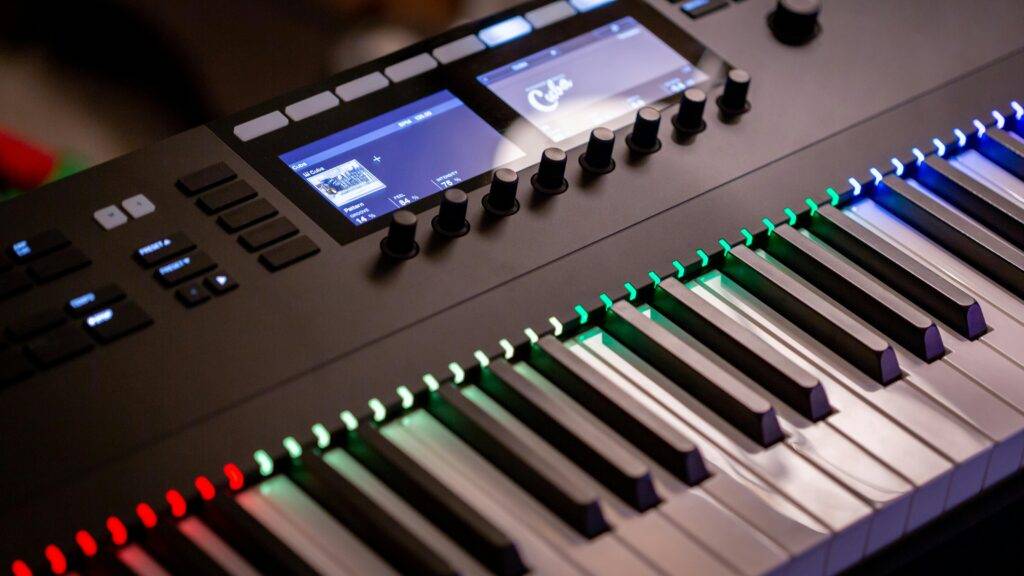Here are two home studio concepts worth checking out. When I started researching studio setups for information on how to design my home studio, there seemed to be three general camps of people: those who store gear and swap it out as they need it, those who want everything connected and able to be used at the flip of a switch, and those who have some gear permanently set up but a space to connect additional instruments and equipment as needed. For those considering designing a home studio for the first time and aren’t sure where to start, this article may help you decide which of these three methods is best for your needs.
There are advantages and disadvantages to swapping out gear. The advantage is storage; you can store your items anywhere without worrying about audio, USB, or power connections, as they aren’t permanently connected. You are no longer concerned about whether you can work with the item in its stored location because it won’t be used in that location. The instrument can be stored in a box or covered to protect it from dust and surroundings. Having this type of setup works great if you like working with one particular synthesizer, sampler or other piece of equipment at a time, as you can have an ideal work desk that is easily accessible, well-lit, with a great line of sight, near the needed audio, USB, and electrical outlets that are required. The only drawback to this method is that you’re limited to how much gear you can use at once and that you need to set up each item before using it, which takes time away from working in your studio.
Another method is to have everything permanently set up. The advantage to this method is that with a flip of a switch, you’re ready to start working as the instrument or equipment is set up, plugged in, and connected and ready to be used instantly upon any inspiration. The negatives of this method follow the positives of the swap-out method. If everything is permanently set up, it must be stored where it can be seen and used. It may need to be connected to power, probably USB and audio, which means dealing with cables and lots of them, depending on your setup’s size. Depending on how much gear you have, you’ll need a mixing board or audio interface that can handle the ins and outs of your gear, or you may need to connect a sub-mixer to handle the additional ins and outs. But if you can manage the obstacles, the advantage is enormous because, with a flick of a switch, all your equipment is ready to use any time inspiration hits.
Some people combine the idea of having a permanent setup with a more modular concept of swapping out gear. This takes the best of both worlds, as you have the items you use most connected and ready to use at any moment, and the instruments and other gear you use less frequently can be easily stored and brought out when the situation requires it. With this method, you can work pretty fast and have fewer issues with storage and connectivity.
As you design your studio, you may stick to one method or use a combination of techniques. If you’re working entirely out of the box, none of this may concern you, as your system is self-contained.
However, if you decide to venture into the work of external instruments and equipment, I wish you the best of luck in developing a design that best suits your needs. I hope you have fun designing your studio.
Some ideas of places to look for storage solutions and studio design needs:
If you’re interested in learning piano or theory online, consider signing up for a free trial lesson through my website; if you are a member of Oustchool for Children, you can find me here.
Check Out More from My Blog
Discover all you can do with music lessons by exploring my blog categories. From Piano Studies and Home Recording to Home Studios, Music Theory, and Self Publishing, there’s something for everyone. Start your next musical journey today!
You may also be interested in my blog post, Audio Patch Bays and Home Studio Set-Ups







